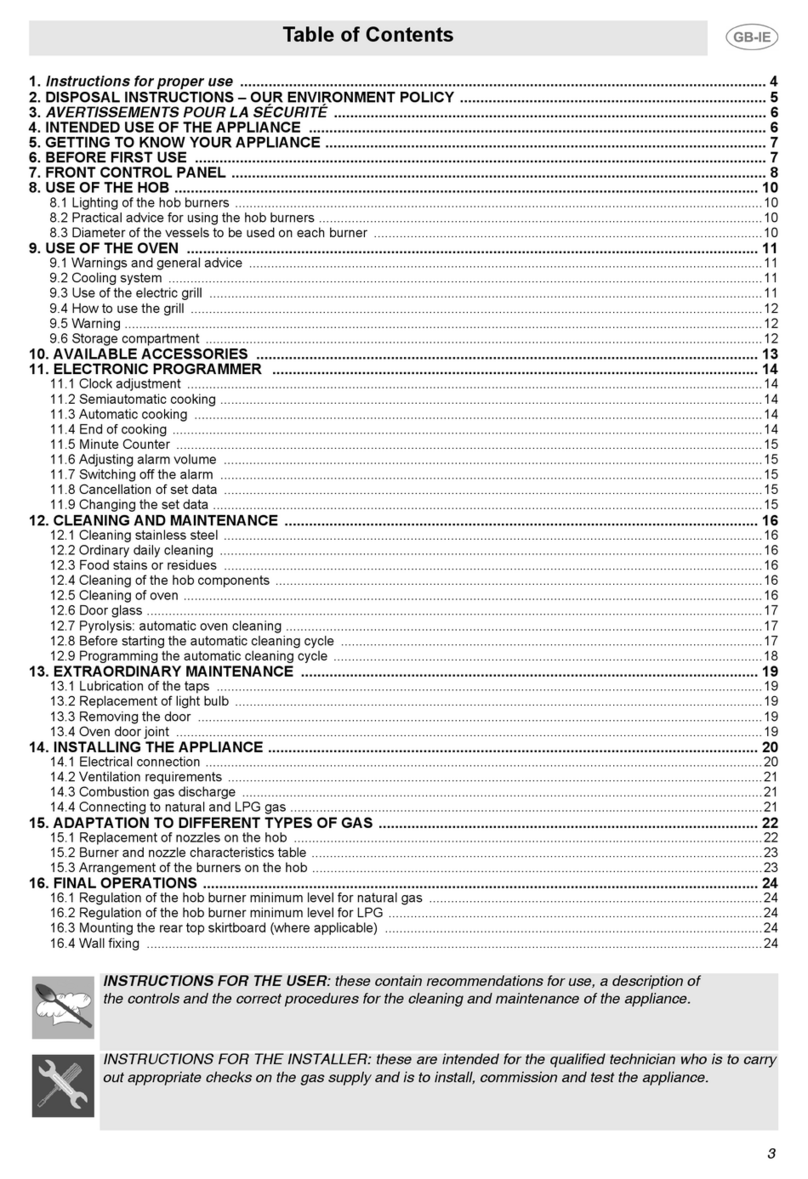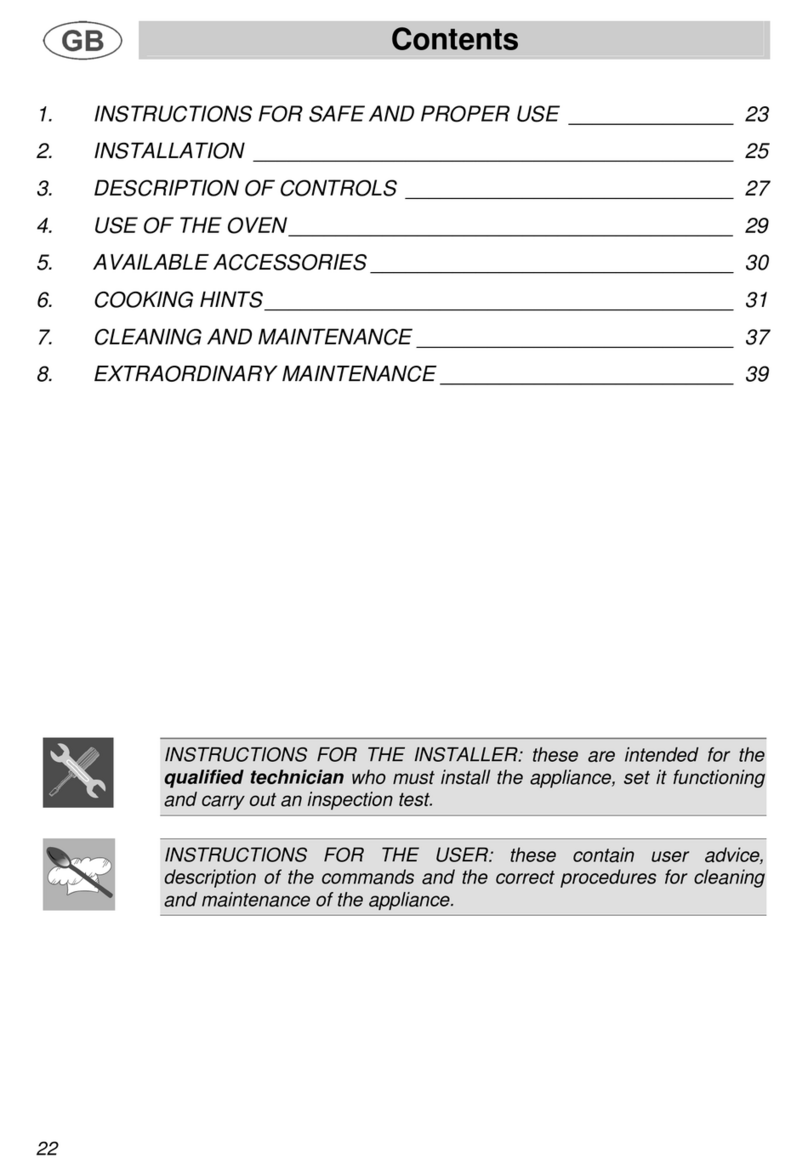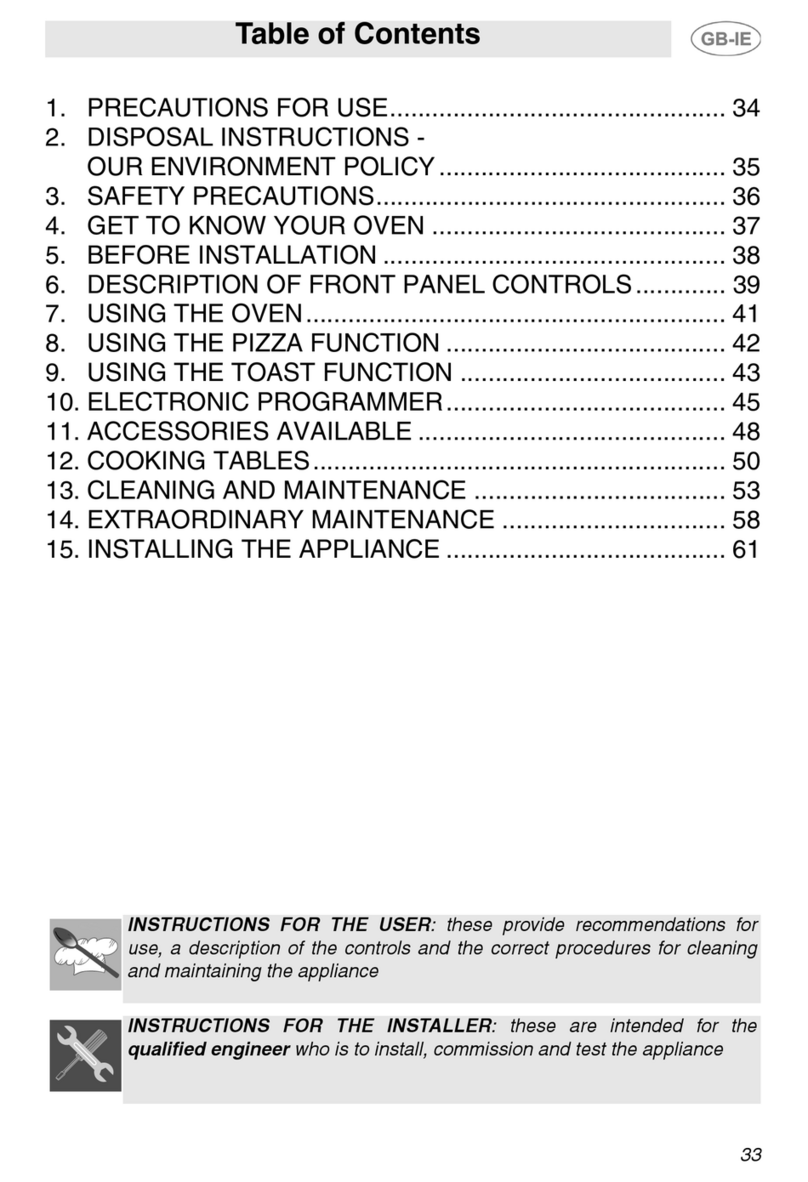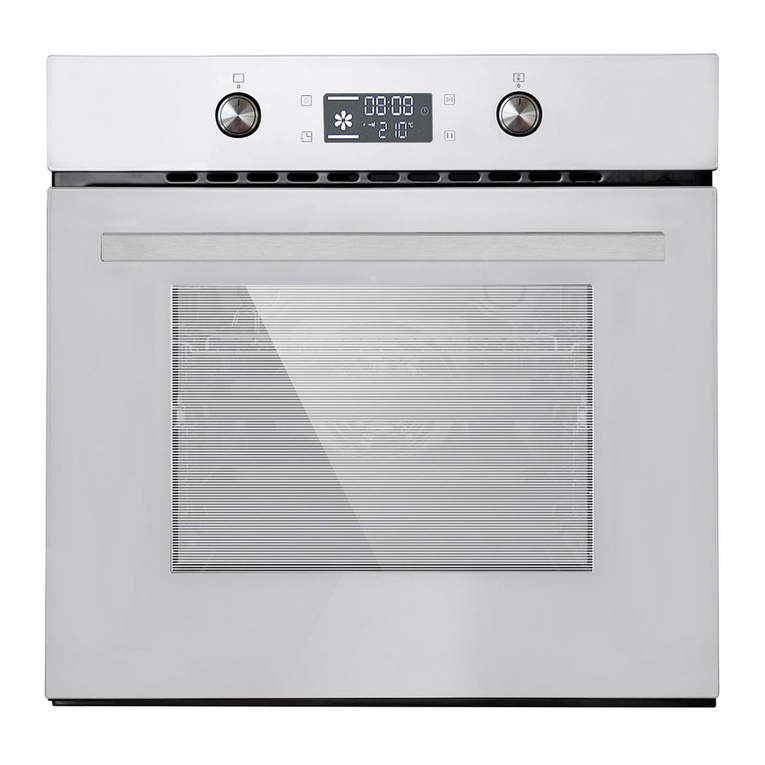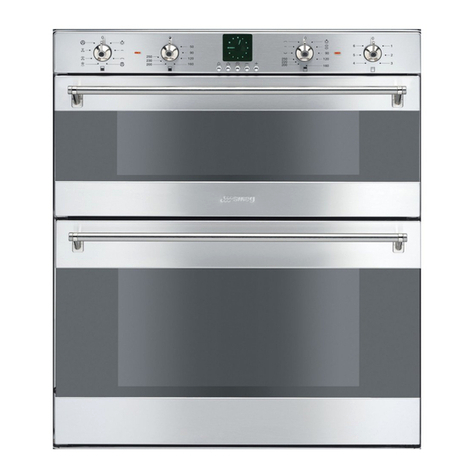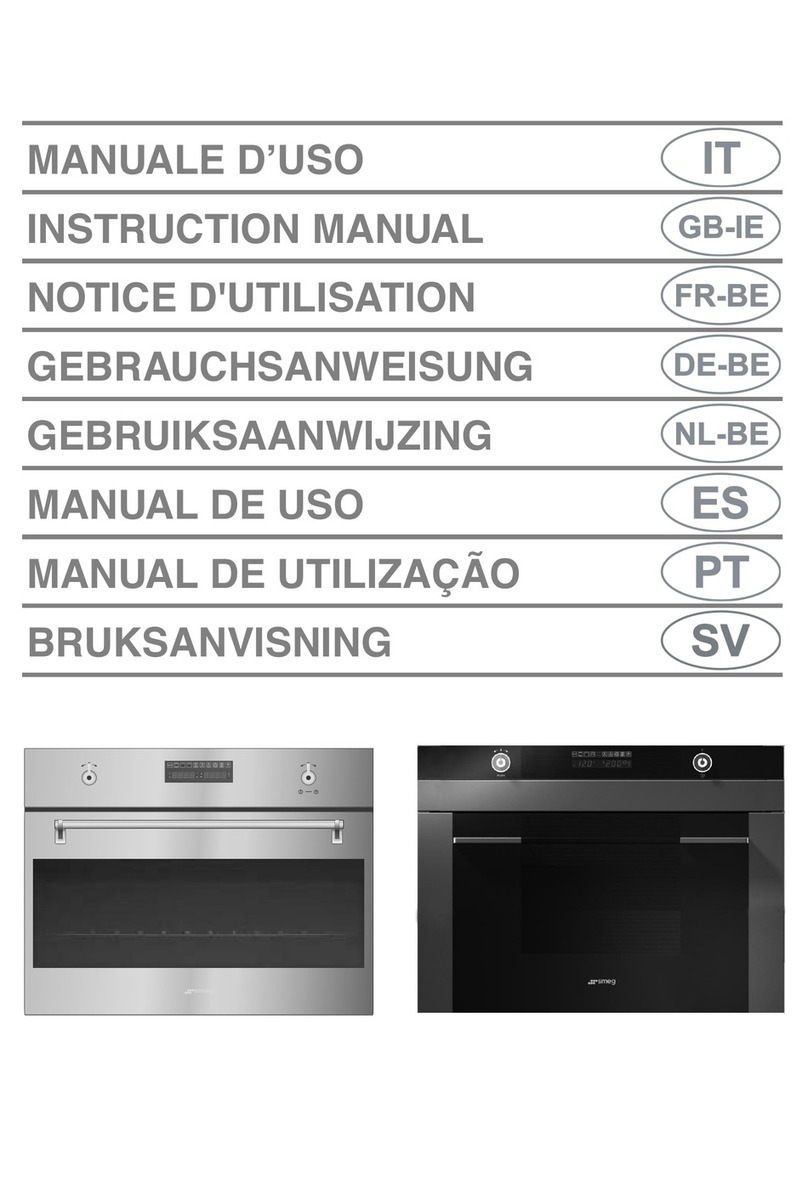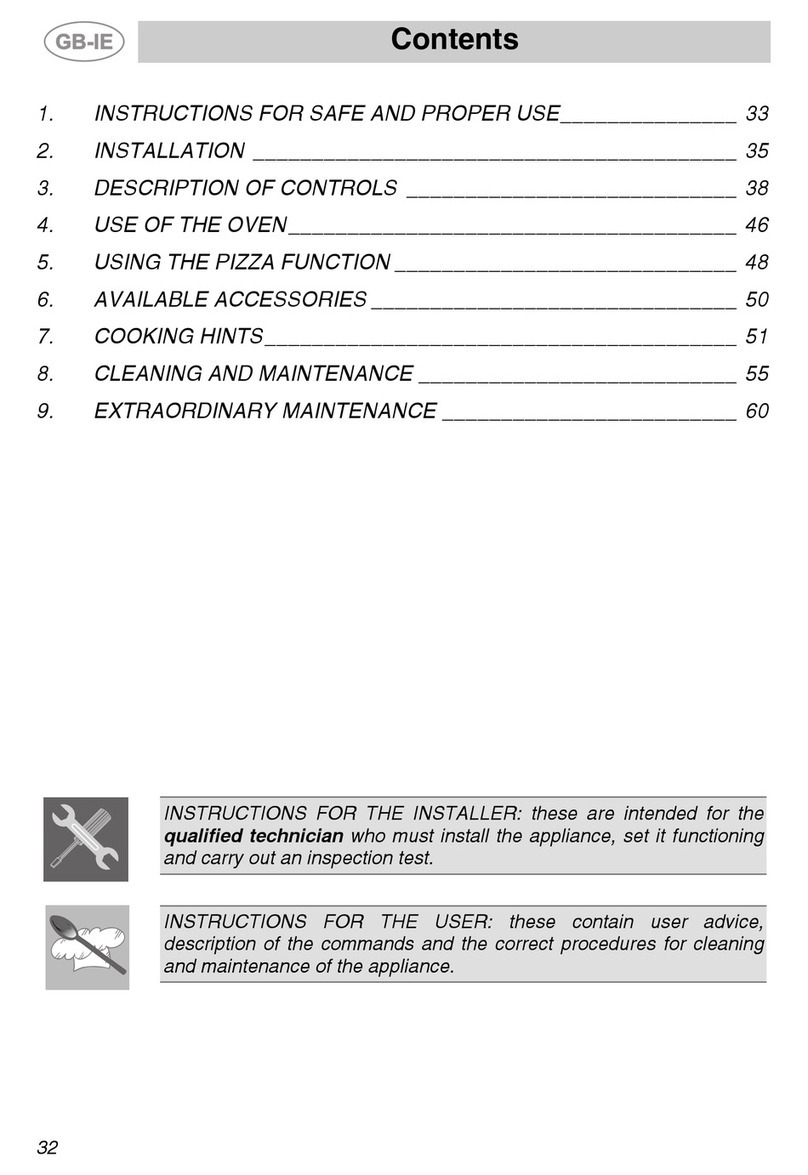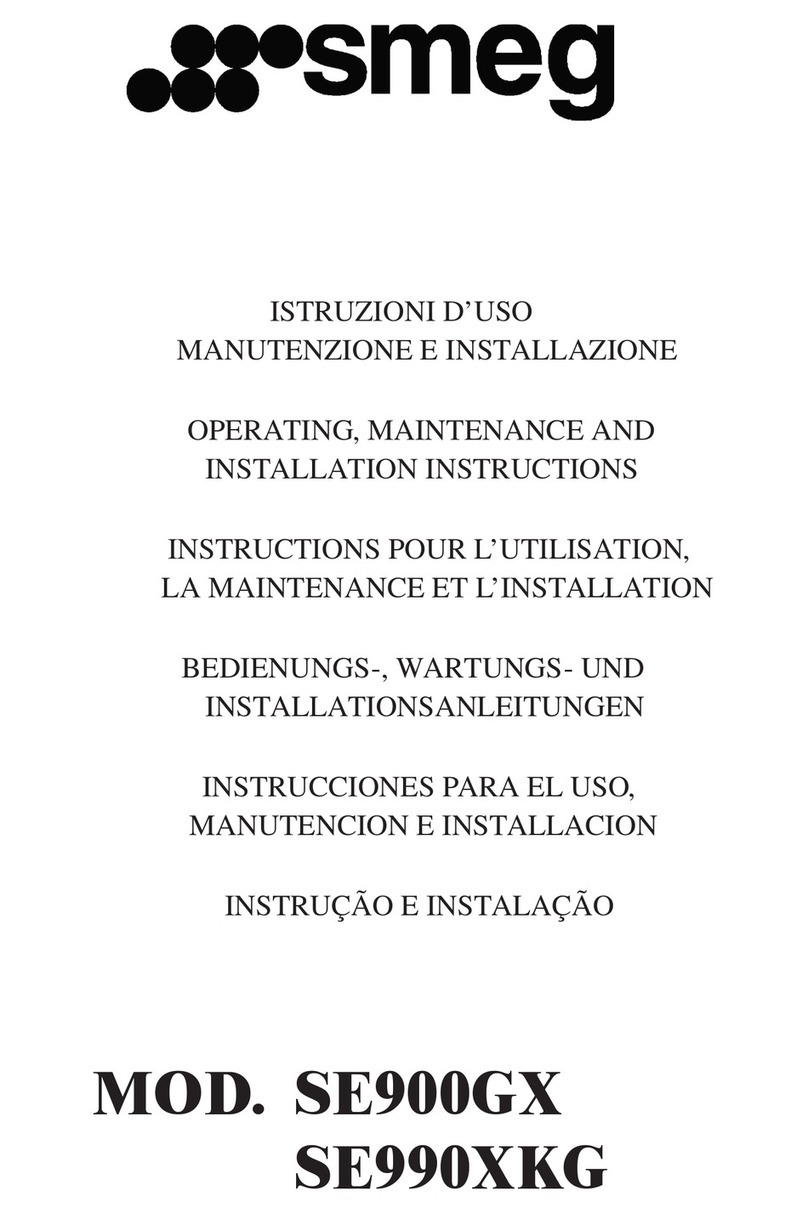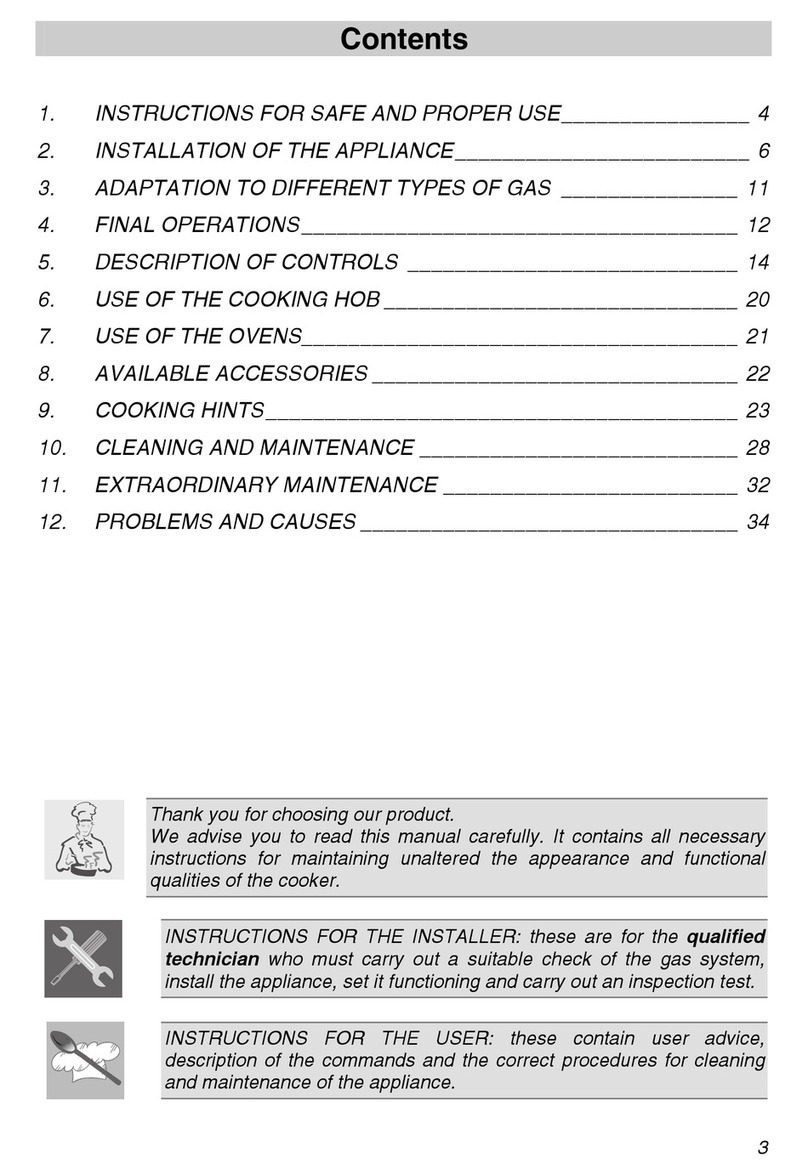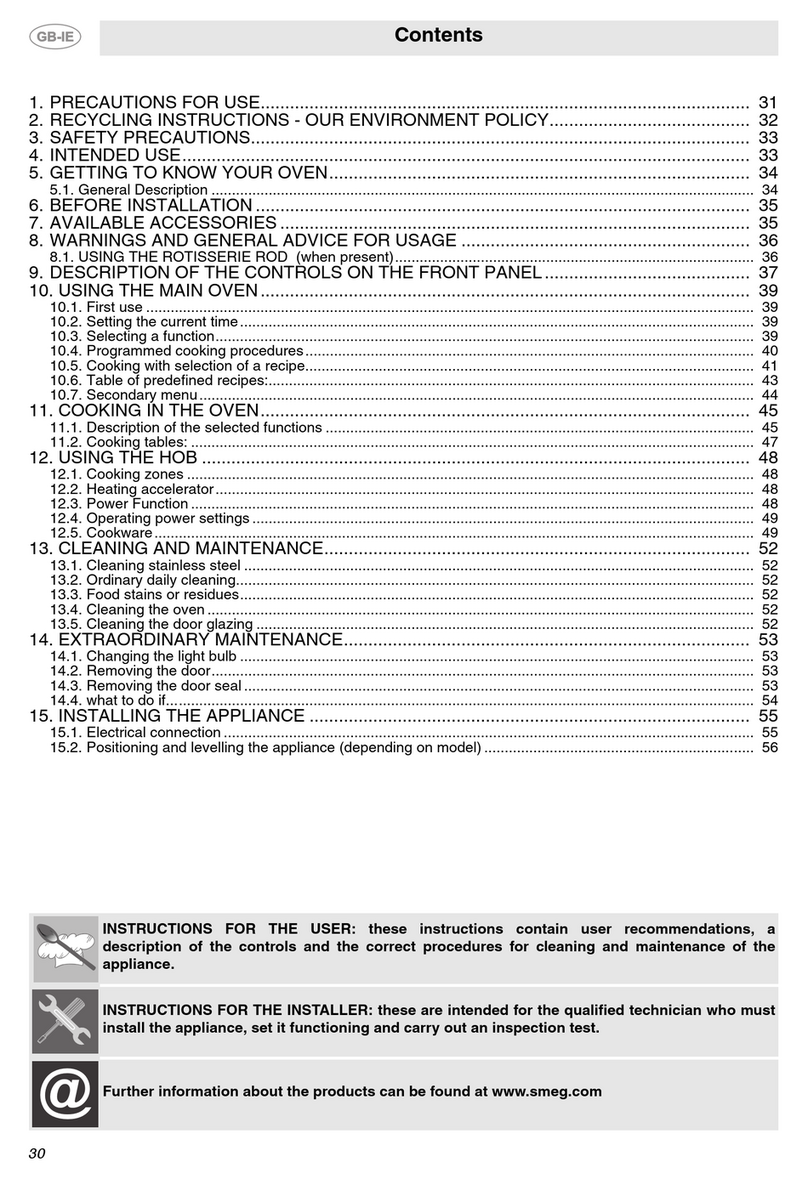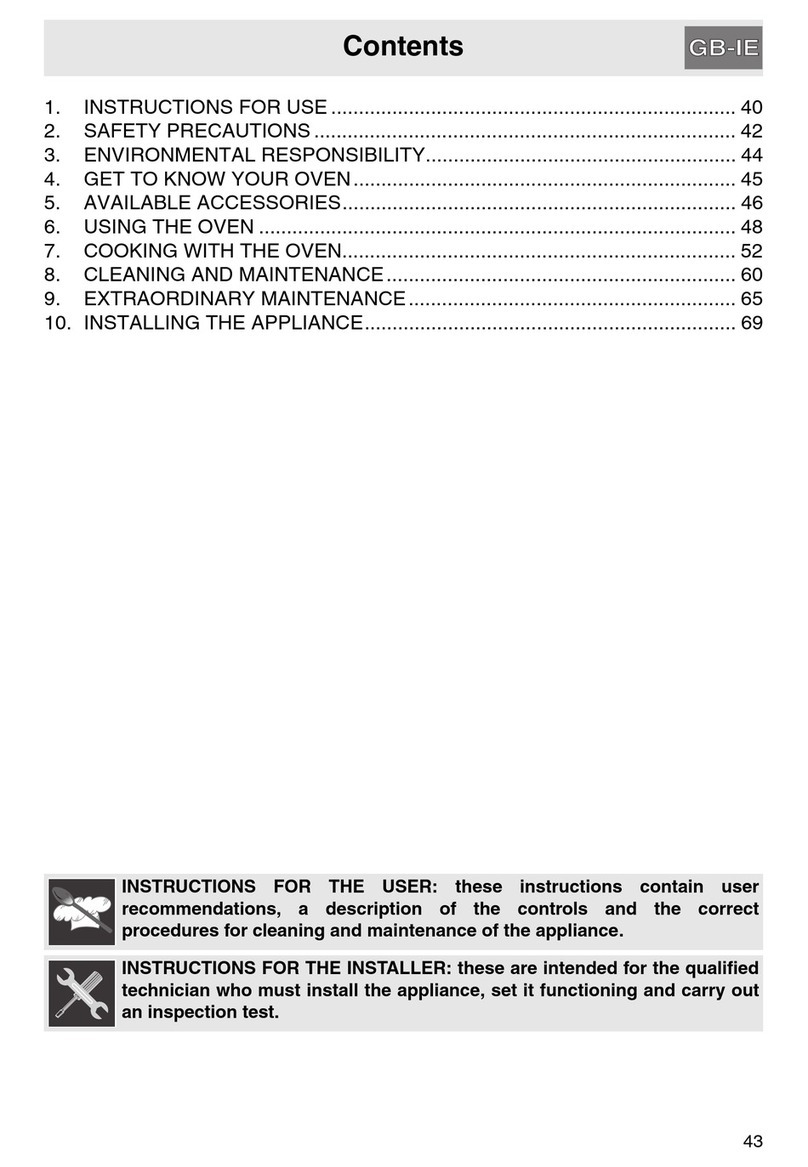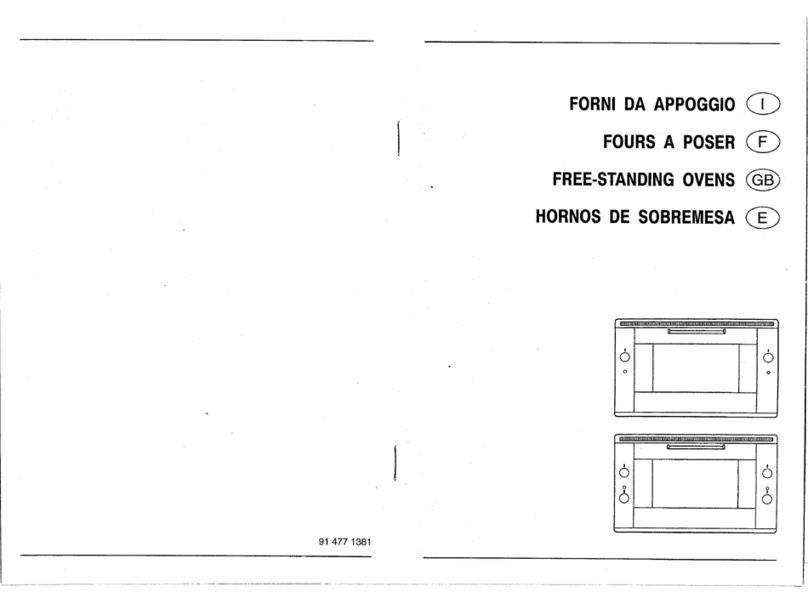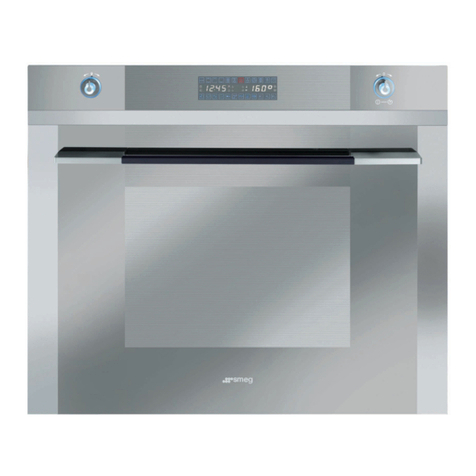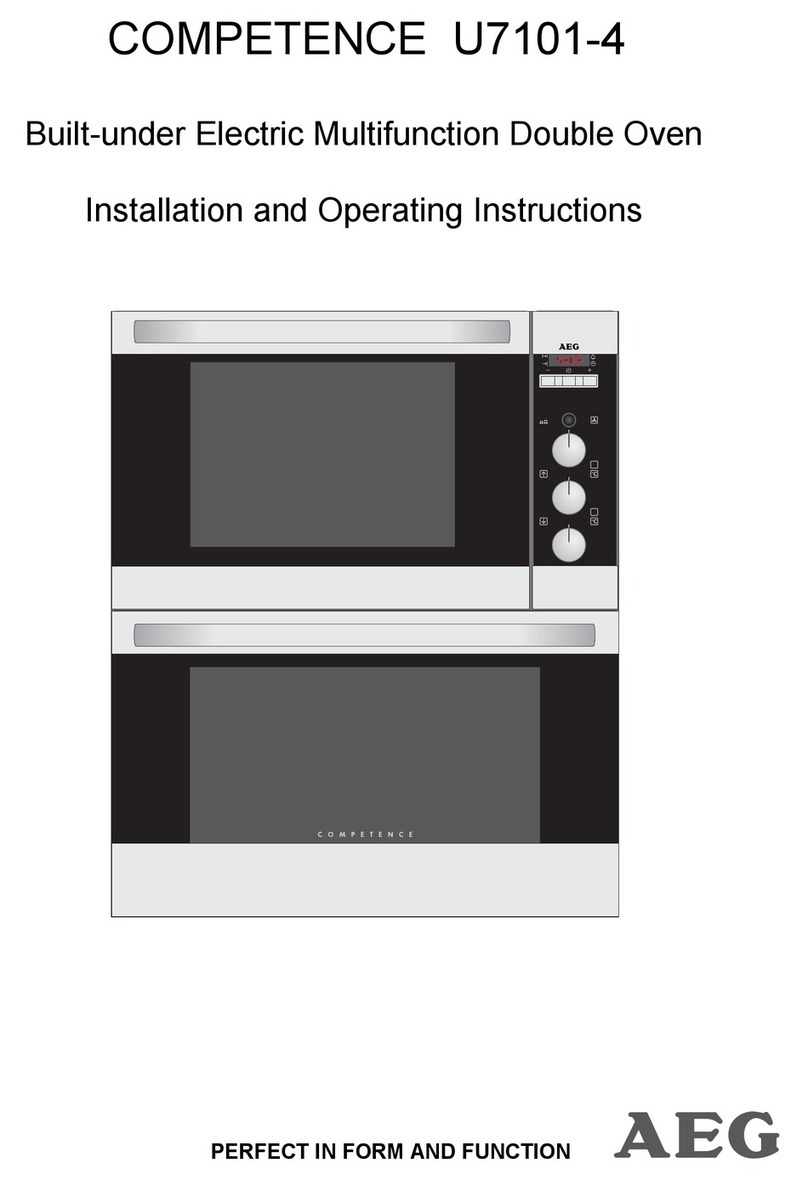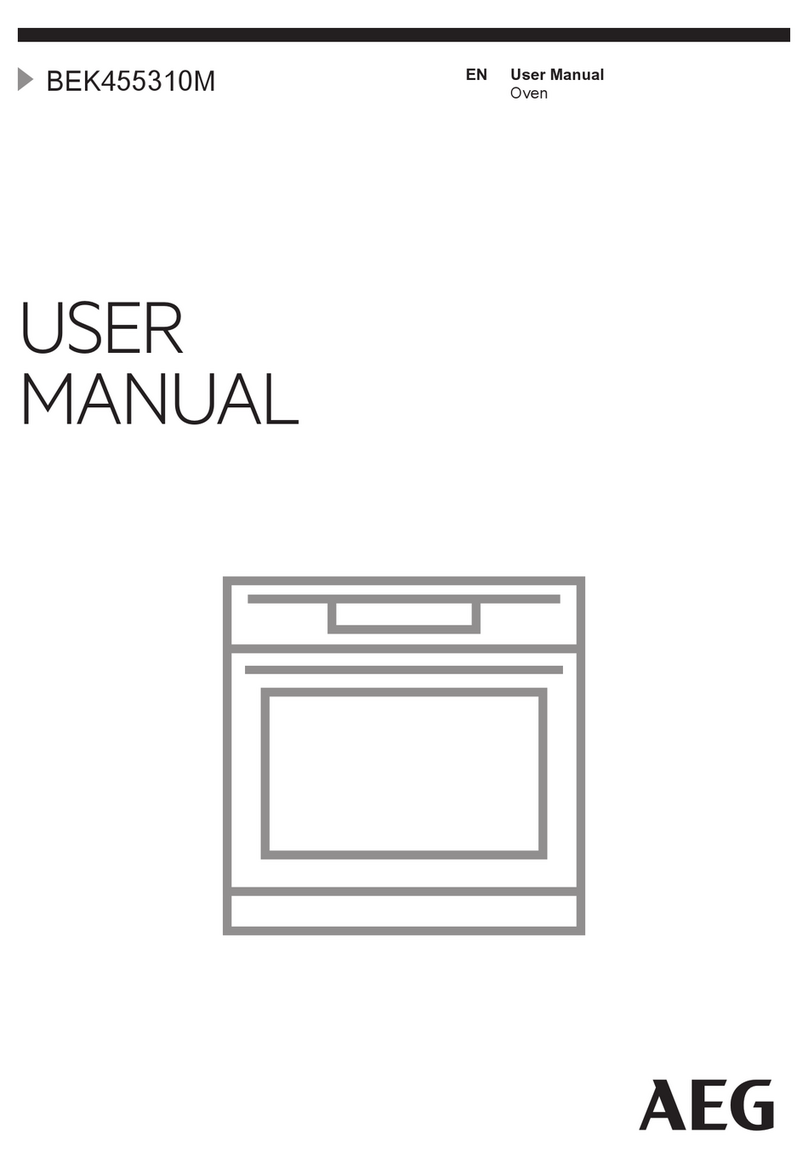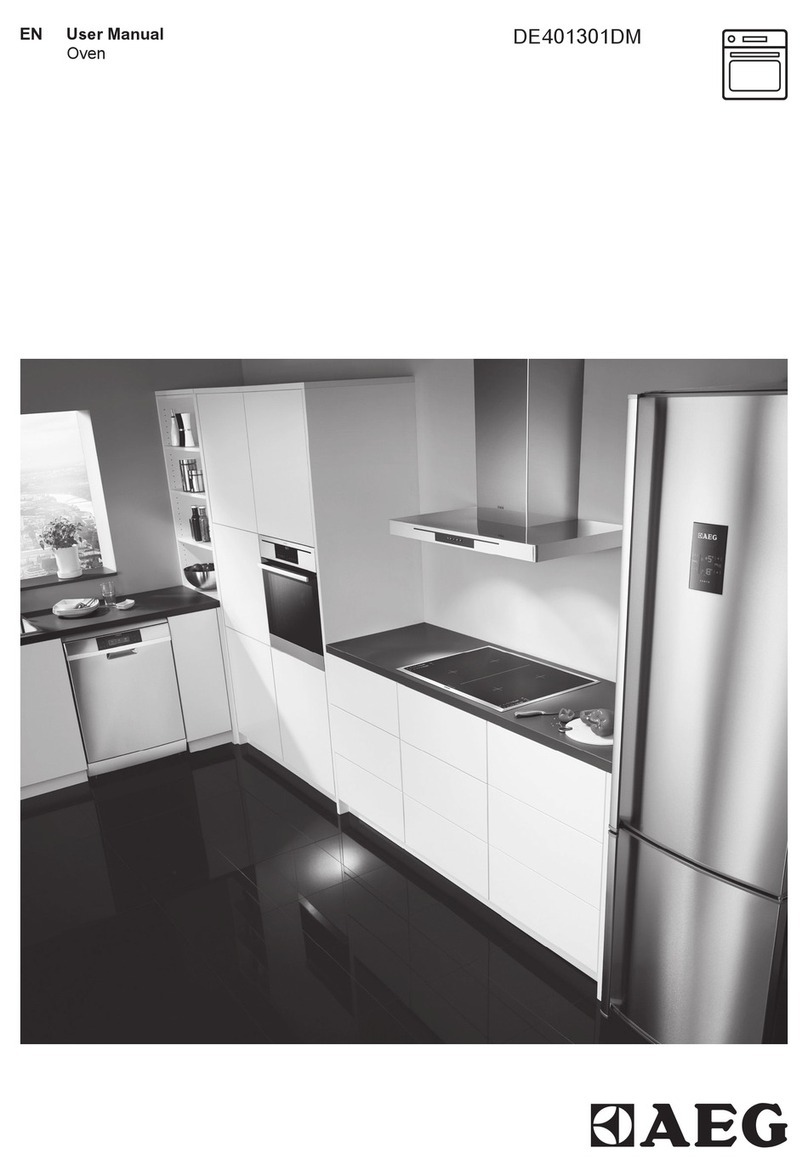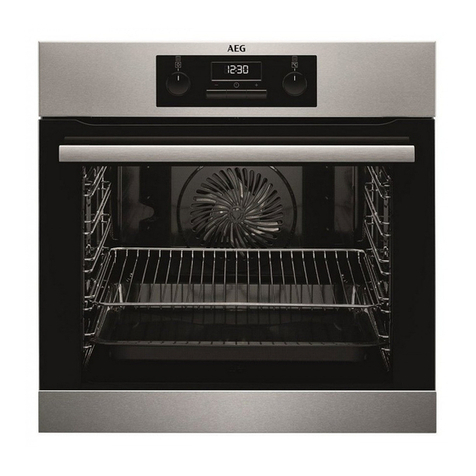General instructions
6
2. SAFETY PRECAUTIONS
Consult the installation instructions for safety standards on electrical or gas appliances and for
ventilation functions. In your interests and for your safety the law requires that the installation and
servicing of all electrical and gas appliances be carried out by qualified personnel in accordance with the
standards in force. Our approved installers guarantee a satisfactory job.
Gas or electrical appliances must always be uninstalled by suitably skilled people.
Before connecting the appliance to the power grid, check the data on the plate against the data for the
grid itself.
If the appliance is installed on a raised platform, secure it using suitable fastening systems.
Before carrying out installation/maintenance work, make sure that the appliance is disconnected from
the power grid.
If the cooking appliances are installed in motor vehicles (for example, camper vans, caravans etc.), they
must only be used when the vehicle is stationary.
Install the appliance so that when opening the drawers or doors of units positioned at the level of the hob
there is no possibility of making contact with pans positioned on top of it.
Immediately after installation, carry out a quick test on the appliance following the instructions provided
later in this manual. Should the appliance not function, disconnect it from the power supply and call the
nearest technical assistance centre.
The plug to be connected to the power supply cable and its socket must be of the same type and
conform to the standards in force. The socket must be accessible after the appliance has been installed.
Never disconnect the plug by pulling on the cable.
If the power supply cable is damaged, contact the technical support service immediately and they will
replace it.
The appliance must be connected to earth in compliance with electrical system safety standards.
During use the appliance and its accessible parts become very hot. Take care never to touch the heating
elements. Keep children younger than 8 away from the appliance, unless under continuous supervision.
Never put inflammable objects in the oven: they could be accidentally ignited and cause fires.
The appliance is intended for use by adults. Do not allow children to go near it or play with it.
This appliance may be used by children from the age of 8 and by people of reduced physical and mental
ability or lacking in experience and knowledge, provided they are supervised or instructed on the safe
use of the appliance and if they understand the associated risks. Do not allow children to play with the
appliance. Do not allow unsupervised children to perform cleaning or maintenance operations.
Never attempt to repair the appliance. All repairs must be carried out by an authorised technician or at
an authorised service centre. The improper use of tools can cause hazards.
This appliance must not be controlled using an external timer or remote control system.

